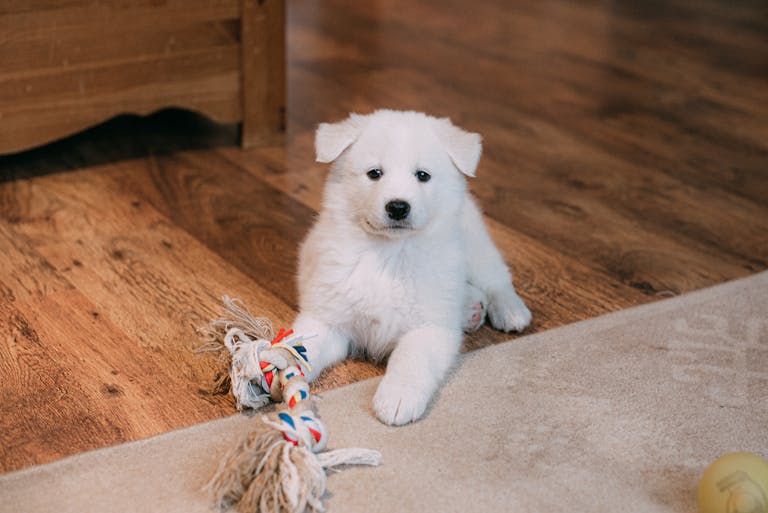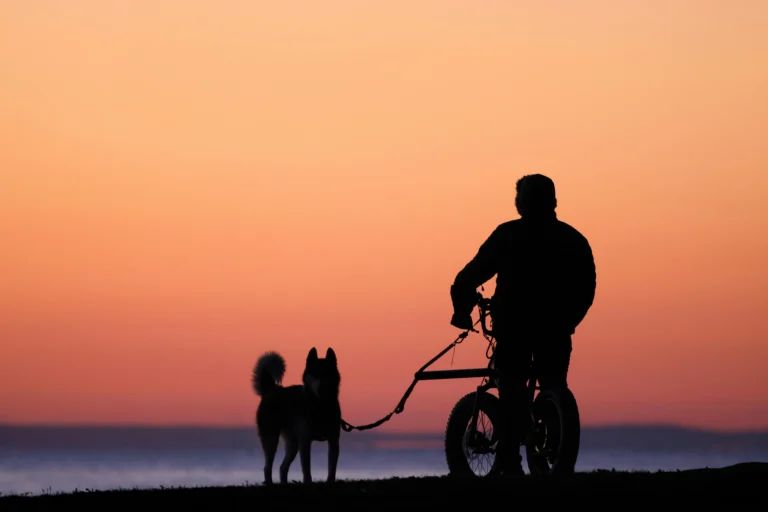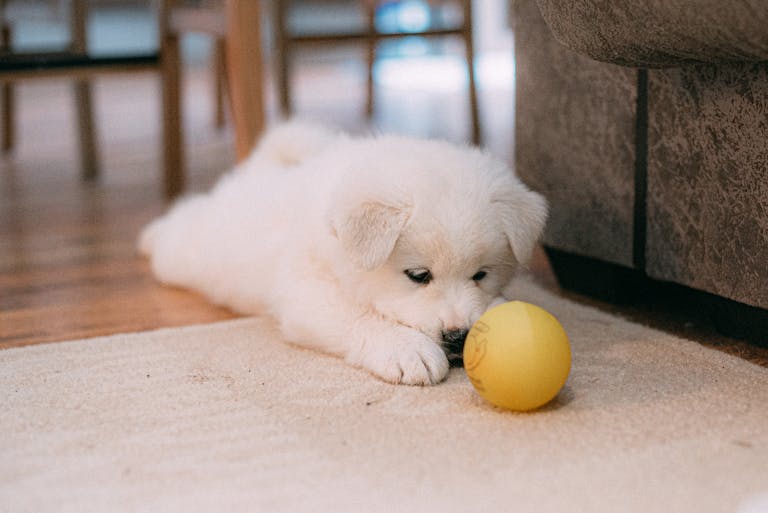15 Scent Games Your Dog Can Play

If your dog had a superhero ability, it wouldn’t be flight or laser vision—it’d be their nose. Dogs experience the world through scent in the same way we rely on sight. Their sense of smell is so powerful, they can detect emotions, follow invisible trails, and even sniff out medical conditions.
And here’s the good news: you don’t need fancy gear or a K9 unit to tap into that natural talent. With just a few household items and a little creativity, you can turn any day into a fun, nose-powered adventure.
Whether you’ve got a curious puppy, a bored couch potato, or a senior who needs low-impact enrichment, these scent games are designed to work for every level. Start simple, build up gradually, and watch your dog’s confidence—and tail—start wagging.
Beginner Scent Games
These games are simple, low-mess, and perfect for getting your dog started with scent work—no prior training needed. They’re ideal for rainy days, indoor enrichment, or just switching up your usual routine.
1. Snuffle Mat
Think of a snuffle mat as a dog’s version of a puzzle board—only instead of solving with paws, they solve with their nose. Just sprinkle part (or all) of your dog’s meal into the fabric layers, and let them go to work sniffing it out. It slows down fast eaters, turns mealtime into mental stimulation, and gives your dog a natural foraging experience—all with minimal effort on your part.
Pro tip: If your dog is a snuffle mat pro, try hiding freeze-dried treats or small pieces of fruit (like apple or banana) for extra challenge.
2. Pick the Hand
This one’s a classic: place a smelly treat in one closed fist, present both hands to your dog, and let them sniff out the prize. Start with your dog watching you hide it, then build difficulty by turning your back or switching hands. You can even involve a second person to offer more “decoy” hands.
3. Play “Find It”
Cue your dog’s inner detective. Start by showing them a treat or toy, placing it in plain sight, and saying “Find it!” As they get the hang of the game, gradually increase the difficulty—toss it across the room, hide it behind furniture, or place it out of direct sight. The goal is to get them using their nose instead of relying on eyesight.
Fun variation: Use your dog’s favorite toy and rotate between hiding food and toys so they learn to search for different items by scent.
4. Where’s Dinner?
Skip the food bowl altogether and hide your dog’s meal in a different spot each night. Start simple—under a chair, in the hallway, beside the couch. As your dog gets better, increase the challenge by using rooms with closed doors or placing food in elevated spots. It encourages your dog to think, move, and sniff—just like they would in nature.
Bonus: This can be a great way to slow down gulpers or give high-energy dogs a pre-bedtime workout.
Intermediate Scent Games
Once your dog has mastered beginner-level nosework, it’s time to level up. These games introduce more complex hides, bigger search areas, and longer duration. They’re ideal for dogs who love a challenge and need a bit more stimulation than your average fetch session.
5. Hide-a-Meal
Instead of feeding your dog in one spot, turn mealtime into a full-on scavenger hunt. Take their kibble or treats and hide small portions around a room or yard. Start with obvious locations—behind a table leg, next to a toy—and gradually work up to more hidden spots like under cushions, inside boxes, or tucked into folded towels.
Pro tip: Use small plastic containers with lids left ajar for an added layer of difficulty.
6. Towel Game
This game is simple but mentally rich. Ask your dog to “stay” while you hide treats wrapped inside towels, blankets, or even old clothes in another room. Then release them with a cheerful “Go find!” and watch them sniff and dig their way through the layers.
7. Hide and Seek
Have someone hold your dog while you go hide somewhere in the house or yard—behind a door, under a blanket, or crouched behind a bush. Once you’re hidden, the other person releases your dog and says, “Go find [your name]!”
8. The Cheese Tree
Got a tree in your backyard or a textured wall? Press small bits of cheese or treats into the bark or cracks and let your dog “hunt” vertically. This adds an extra layer of challenge, encouraging your dog to use both their nose and body in new ways.
Safety tip: Avoid trees or walls treated with pesticides or chemicals. And don’t leave food behind—clean up once your dog is done.
9. Lights Out
Want to supercharge your dog’s sniffing abilities? Turn off the lights. Use a dim or dark room to hide treats or toys, forcing your dog to rely entirely on scent rather than sight. Start with familiar locations and increase the difficulty as they get more confident.
Advanced Scent Games
These games are designed for dogs who love problem-solving and have already built some scent game foundations. They involve more planning, patience, and often specific training cues—but the payoff is huge. These activities challenge your dog’s brain in a big way and help build focus, endurance, and scent discrimination.
10. Scent Trail Tracking
Use a high-value treat (like a piece of hot dog or jerky) and drag it slowly along the ground, furniture, or baseboards. Then hide the treat at the end of the trail and release your dog to “find it.” Indoors is great for starters, but the real fun begins when you move it outdoors—where wind, grass, and natural smells add complexity.
Pro tip: Start with short, straight lines. Over time, add turns, dead ends, or longer trails to test your dog’s tracking skills.
11. Scented Toy Retrieval
Teach your dog to find a specific toy by smell, not sight. Lightly scent one toy using a unique (but safe) smell—like a tiny spritz of lavender water or a dab of vanilla extract—and hide it among several unscented toys. Cue “Find your toy!” and let them sniff it out.
Training tip: Start with the scented toy visible, then gradually bury it deeper in the pile. Reinforce heavily when they pick the correct one.
12. What a Klutz!
This game mimics real-world usefulness: pretend you’ve dropped something on a walk (like your keys). Say “Oops!” and act concerned, then cue your dog with “Find it!” Encourage them to sniff around and locate the object. Once they get the hang of it, change up the item—use your wallet, phone case, or gloves to keep it interesting.
13. Scent Discrimination (Basic)
Now we’re getting into the science of scent. Hold food in one fist, and leave the other hand empty. Present both and allow your dog to sniff before choosing. Only reward correct guesses. You can increase difficulty by adding more people, more hands, or switching up which hand holds the reward without letting them see.
Expert Scent Work
Ready to go full detective mode? These advanced scent games mimic professional detection work, like what you see in K9 units or competitive nosework trials. They require specific training, structure, and attention to detail—but they’re deeply satisfying for dogs with strong sniffing drive and focus.
14. Scent Detection and Alert
This game introduces your dog to a “target scent” and teaches them to search for it among decoys. Start by placing a small drop of birch oil on a Q-tip and sealing it inside a vented tin (like a metal breath mint container with holes). Hide the scented tin among several identical scentless containers. On cue—“Search!”—your dog must locate the birch-scented container and signal you (a nose tap, sit, or paw).
Safety tip: Always use dog-safe essential oils and avoid overwhelming scents. Stick to one scent until your dog masters it.
15. Advanced Scent Discrimination
Now that your dog knows how to identify a target scent, it’s time to make things harder. Start by letting them sniff a scented cotton ball—like lavender or chamomile. Then present several cups, boxes, or tins, each containing a different scent. Only one matches. Your dog must correctly identify and alert to the cup with the same scent they were introduced to.
Important: Avoid scent contamination—wash your hands or use tweezers between scent samples, and store scent items separately. Even tiny residues can throw off your dog’s accuracy.
Final Thoughts
Scent games aren’t just a fun party trick—they’re one of the most natural and rewarding ways to engage your dog’s mind. Whether you’re hiding dinner in a towel or teaching your pup to sniff out specific oils, you’re tapping into thousands of years of instinct and giving your dog something priceless: a job they love.
So next time your dog’s bored, anxious, or bursting with energy, don’t reach for the tennis ball. Reach for the snuffle mat, the towel, or the cheese cubes. Their nose knows what to do.




